How To Transform Maldivies's Cadjan Thatched Roofs with Artificial Thatch
The Maldives, a tropical paradise known for its crystal-clear waters and luxury resorts, relies heavily on tourism as the backbone of its economy. Every year, there are nearly two million international tourists visit Maldives, with China being the largest source of visitors. To maintain its appeal, the Maldives continually upgrades its infrastructure, including resort aesthetics. Among its buildings in various islands, most of them are covered with natural cadjan thatched roof tiles or natural palm leaves tiles, they are iconic of Maldives's unique landscape and bring clients relaxed atmosphere, but the disadvantage is they require high maintenance. Replacing them with artificial cadjan thatch offers a durable and visually appealing solution.
1. Water Villas in Maldives and its Traditional Thatch Roofs
As a characteristic building on the coast of Maldives, the "water villa" was originally just a residence for island residents. With the development of tourism, the residents of the island have now moved into modern high-rise buildings, leaving the charming "water villas" to visitors from all over the world. The charm of a water villa first comes from its almost primitive construction method, especially the cadjan thatch roof or palm thatch roof. Each room is independent, with a sloping wooden roof style and an original cadjan roof, fixed to the sea surface with steel bars or round wooden columns. The house is about 10 meters away from the coast, connected to the shore by wooden bridges. Some "water villas" are even more romantic, without wooden bridges connecting them, but relying on rowing boats to ferry them over.
These thatched roofs, made from natural cadjan thatch tiles or palm leaves, are a classic feature of Maldivian resort hotel "water villas" and beachside entertainment structures. These thatch roofs are not only aesthetically pleasing but also functional: Cadjan roofs or palm leaves are naturally waterproof, and flexible, making them ideal for coastal environments.
Natural Cadjan Thatch Roof Water Villa:
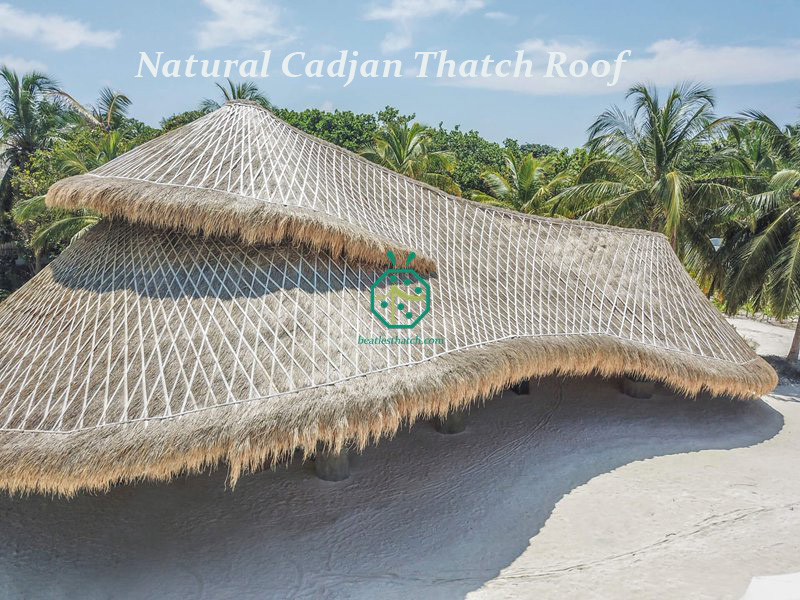
However, they also have some big disadvantages:
1) They will decay easily under Maldives hot and high humidity, salty weather.
2) The thatch roofs will be harmed by insect eating or bird eating.
3) The natural cadjan thatch roofs are not fire retardant, which is a big threat to tourists' safety during the stay in the water villas.
4) They are not windproof. They are easily tear out by strong winds.
5) Under the hot, high humidity and salty environment, they will create some unpleasant smell sometimes.
6) They require frequent replacement (every 2–5 years) due to weathering.
2. Weather Challenges for Thatch Roof in Maldives
The Maldivian climate is harsh for thatch roof:
High temperatures (average 30°C), heavy rainfall during the monsoon season (May–November), and exposure to saltwater and strong winds.
Natural cadjan thatch or palm thatch struggles to withstand these weather conditions, decay so easily, rot or eaten by birds, worms, or damaged by strong winds, leading to frequent repairs, that is big cost for resort hotels and sometimes bring uncomfortable experience to tourists from various countries.
Not all synthetic fiber thatch roof suitable for Maldives's weather too. If not high quality materials and correct formula of additives are added, the synthetic thatch will face serious decay issues too.
3. Benefits of Artificial Thatch
Artificial thatch, made from synthetic resins (e.g., polyethylene/polypropylene), offers several advantages:
1) Durability:
Resists UV rays, saltwater corrosion, and fungal growth. It lasts 15-20 or more years with minimal maintenance.
2) Fire Resistance:
Synthetic thatch is unlike natural kajan thatch, they could provide more reliable fire resistant performance and make the stay in the water villa much safer.
3) Eco-Friendly:
Reduces the need for frequent palm leaf harvesting.
4) Low Maintenance:
No need for regular replacements or pest control.
5) Higher aesthetic value as they are more uniform looking.
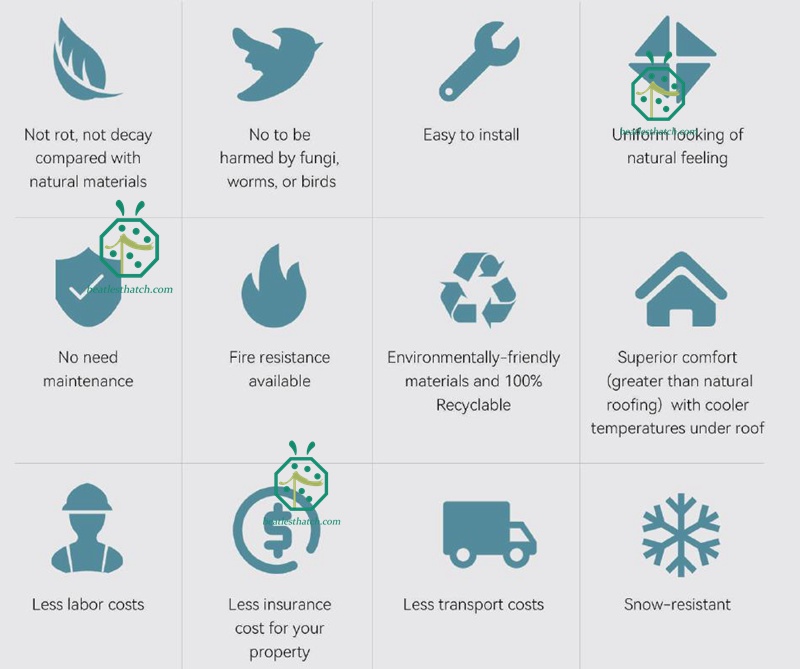
4. Recommended Artificial Thatch for Maldives
As per Maldives's weather, we recommend below thatch materials only.
Synthetic Palm Thatch: Mimics the texture and color of natural palm leaves. It use HDPE as materials. Durable lifespan.
Polyethylene (PE) Blends Thatch Roof: Excellent UV-resistant and nearly not have color fading issue.
Nylon thatch roof: Nylon thatch is better fire retardant compared with PE thatch roof and more fluffy looking. It is suggested for Maldives too.
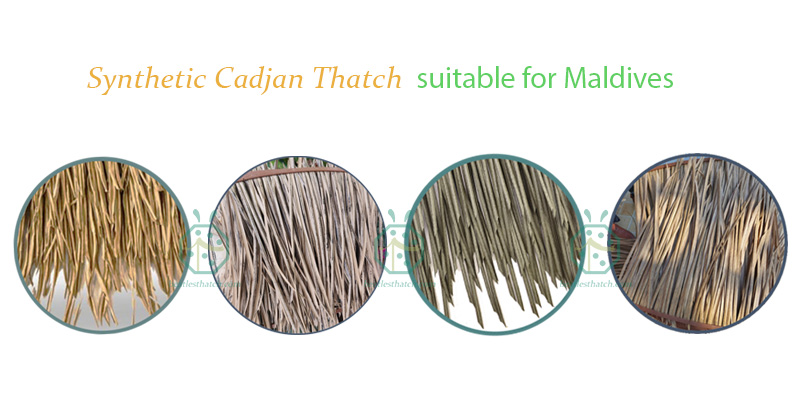
5. How to Make Sure You Choose the Correct Artificial Cadjan Thatch Roof:
◭ Make sure new materials are used for production of artificial thatch.
Recycled materials will cause decay so easily.
At the same time, please note that among the various plastic materials, HDPE and nylon would be more suitable to produce artificial thatch.
PP thatch materials are not very durable.
PVC thatch materials are too soft under hot weather and easier fading.
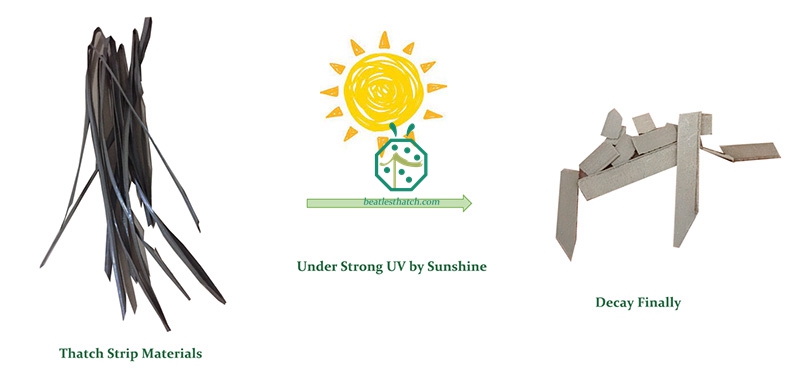
◭ Make sure UV-retardant and antioxidant additives are used for production of thatch materials.
Different plastic materials (HDPE and nylon) would require different types of additives.
And need to make sure they are compound type. Not compound type would be not excellent enough.
◭ Make sure UV-retardant test equipment are running everyday to test the materials.
This is necessary to make sure the formula of the materials are correct.
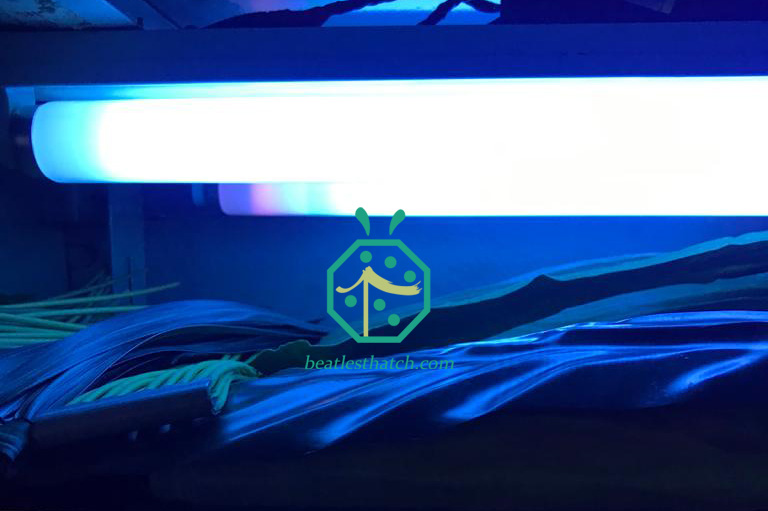
◭ If you need fire retardant thatch roof, could consider mixing some PVC materials with HDPE or nylon.
PVC materials are great for fire retardant.
But not suggest to use PVC materials only due to the reasons mentioned previoulsy.
6. Step-by-Step Natural Cadjan Thatch Roof Renovation
Here’s how to do renovation for your resort's natural cadjan thatch roof with artificial thatch:
◭ Remove Decayed Thatch:
Many holes could be seen inside the villa after natural thatch roofs are used for 2-3 years normally. And the natural thatch roofs get decayed and fungus may grow on them. Clear any damaged natural cadjan thatch or palm leaves or alang alang roof, etc.
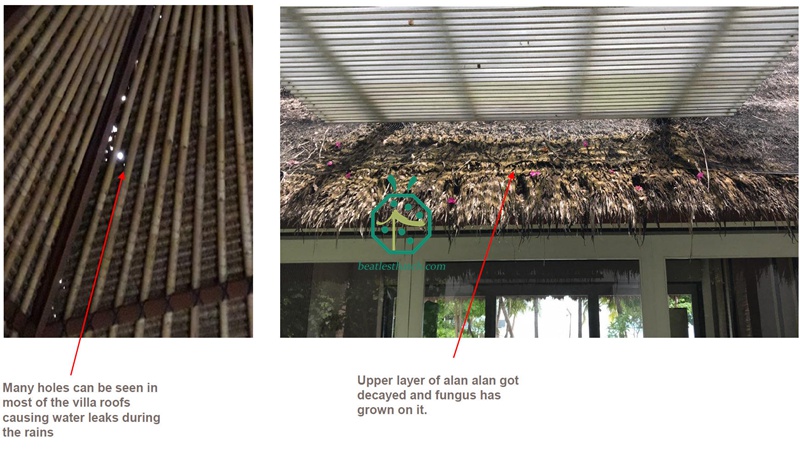
◭ Install Plywood or OSB Board:
If no need to clear the damaged natural thatch roofs, it would be better to cover with plywood or OSB board on the natural cadjan roof. This would be better base for the synthetic thatch roof installation and you could install other materials such as waterproof membrane or thermal insulation materials on the plywood to create better feel inside the villa room.
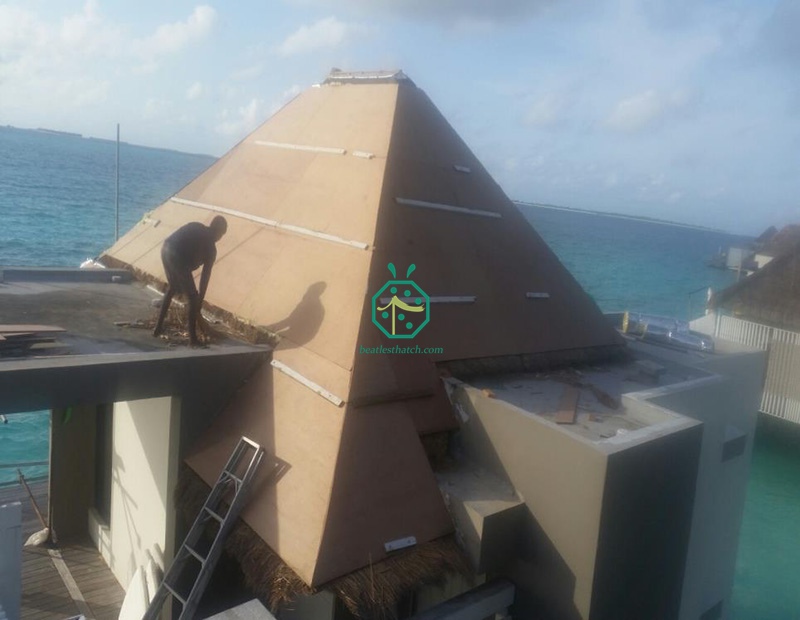
◭ Add Waterproof Membrane:
Apply a waterproof membrane or PVC waterproof fabric to prevent leaks. In tropical ocean weather, it is better to use good quality waterproof membrane. If the waterproofing membrane is too hard and lacks flexibility, the nails will not make good contact with it after being driven in. During raining, water can then seep through the gaps. So, we suggest to purchase famous brand waterproof membrane, such as "Oriental Yuhong". We could help you purchase this material.
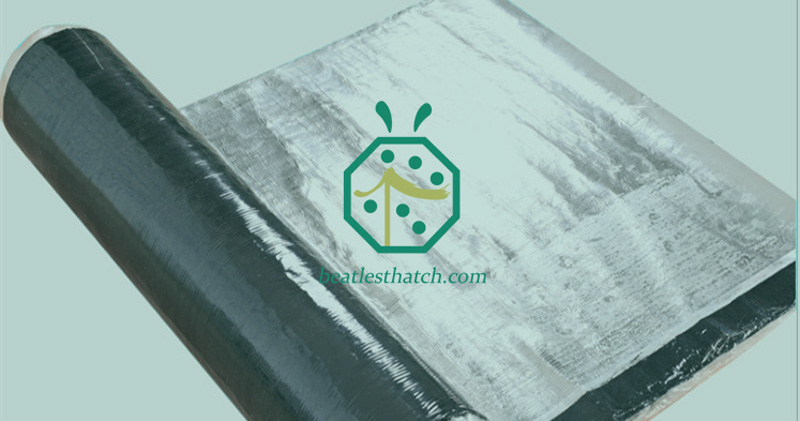
◭ Install Thermal Insulation Materials:
As Maldives is very hot and high humidity, install thermal insulation boards or aluminum foiled bubble foam to improve energy efficiency and enhance customer experience is important.
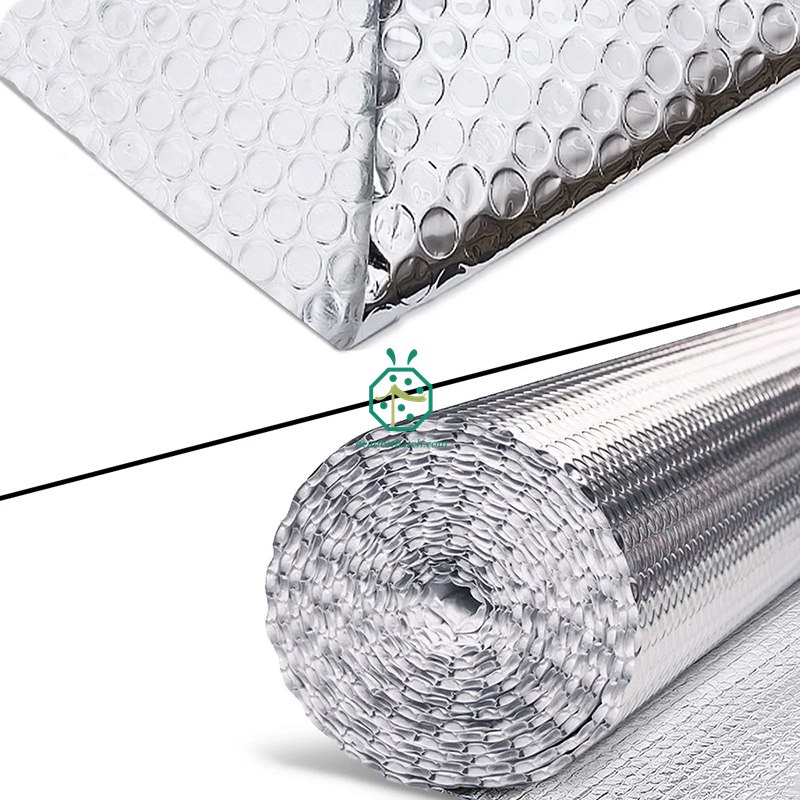
◭ Install Artificial Thatch:
Method 1: Fix synthetic thatch panels using stainless steel screws. Our common artificial thatch is 500x500mm size, make sure at least 8 pieces of thatch tiles to cover 1 square meter roof to make sure enough overlap and beautiful looking. Some clients even use 12 pieces for 1 piece.
Method 2: Fix steel wires or nylon nets to the roof at first, and then fix synthetic thatch panels to the steel wires or nylon nets with steel wires or plastic nylon ropes, etc. Still need to make sure enough overlap.
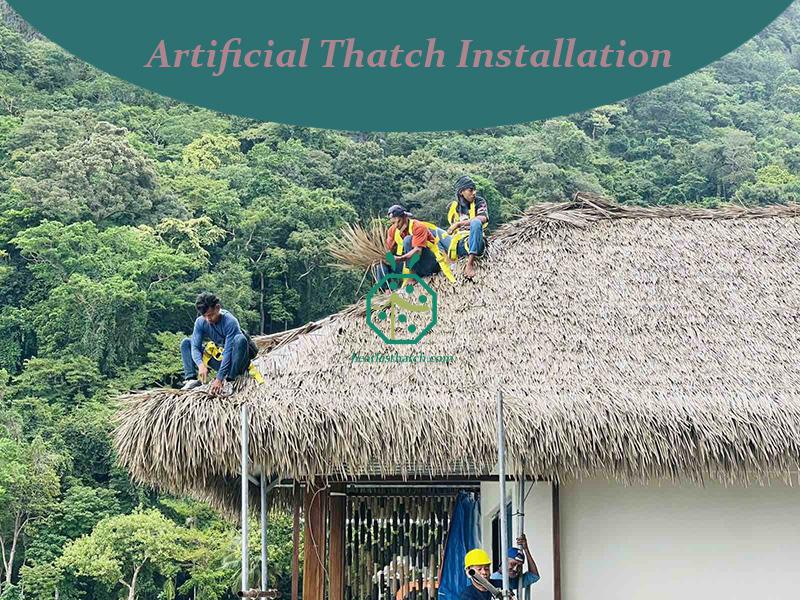
P. S.: For tropical countries such as Maldives, Fiji, etc, to install artificial thatch roofing, it is better to use stainless steel 316 for screws, otherwise, it will rust very quickly (even stainless steel 304 will rust too under such high humidity and salty weather).
7. Other Artificial Materials for Resorts
To enhance the tropical vibe while reducing maintenance, you could consider below artificial decoration elements for your resorts:
◭ Artificial Bamboo Fencing: Resists moisture and insects, perfect for perimeter fencing or decorative barriers.
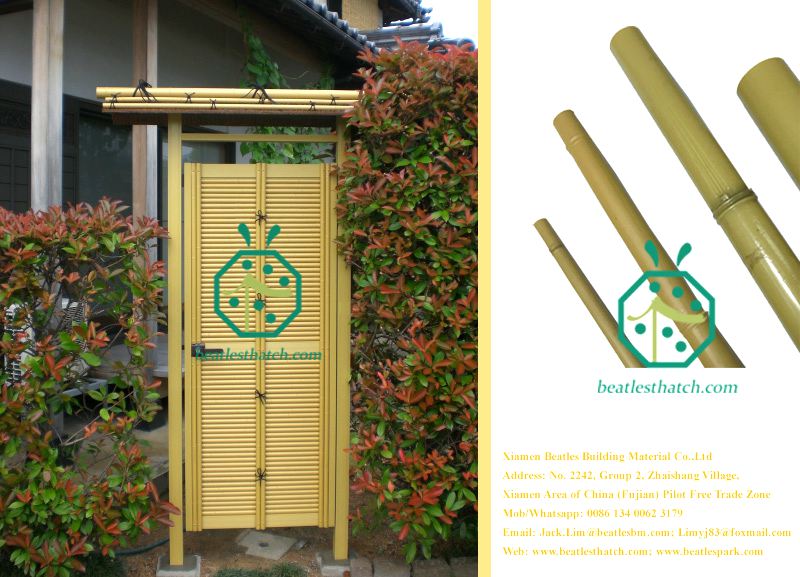
◭ Synthetic Bamboo Woven Ceiling Panels:
Lightweight, fire-resistant, and ideal for indoor/outdoor ceilings.
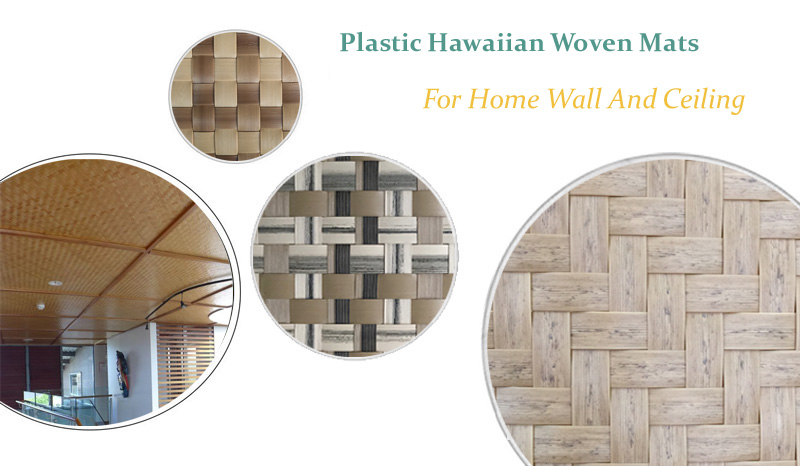
Artificial thatch is a game-changer for Maldivian resorts. It preserves the traditional aesthetic while eliminating the drawbacks of natural thatch. With its longevity, safety, and low upkeep, synthetic materials are paving the way for sustainable tourism infrastructure in the Maldives.
Welcome your inquiry to us
Tel: +8613400623179
Whatsapp: +8613400623179
Email : jack.lim@beatlesbm.com
Group 2, Zhaishang Village, Huli District, Xiamen, China
Get A Free Quote
Scan to Whatsapp:
